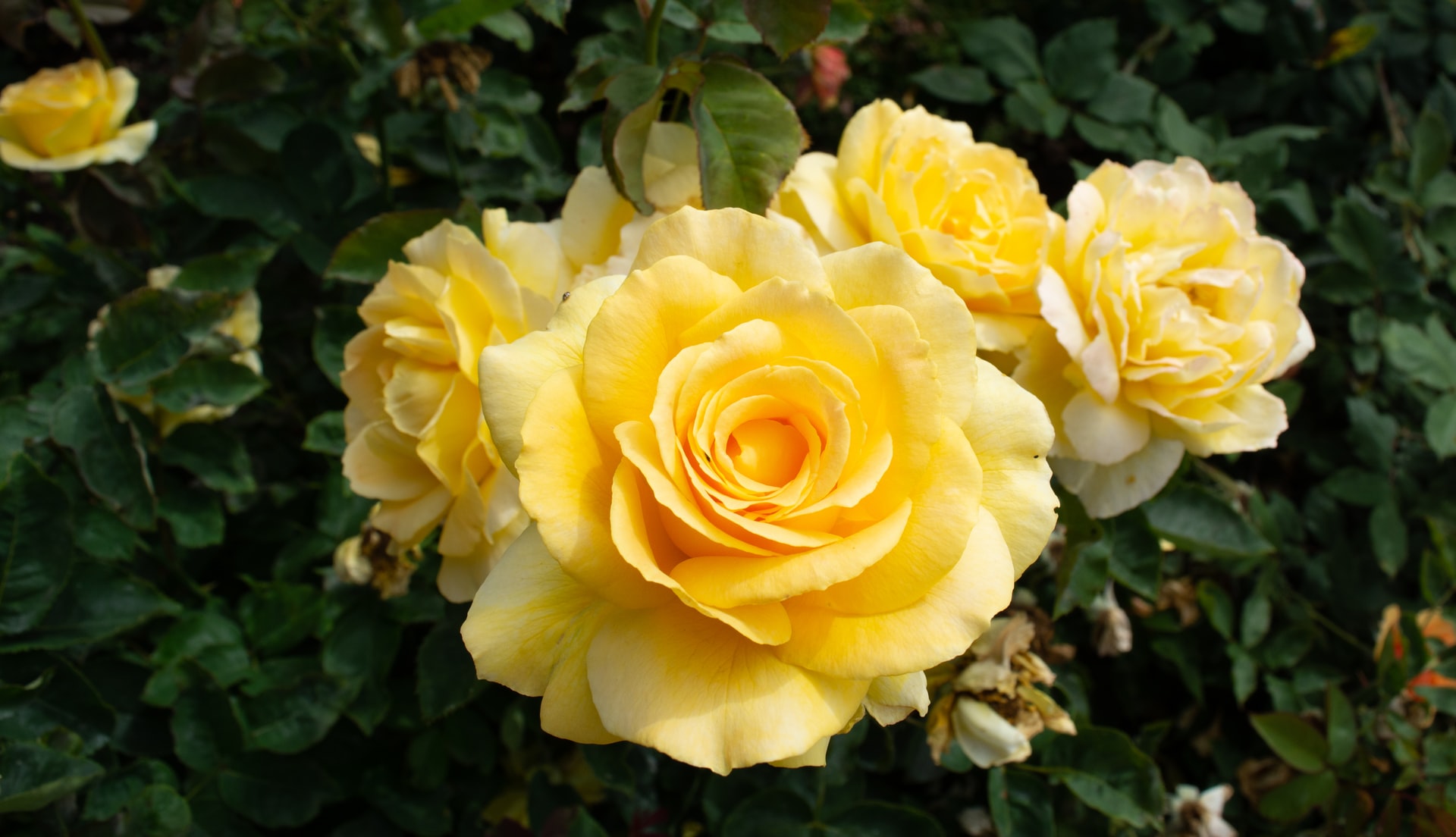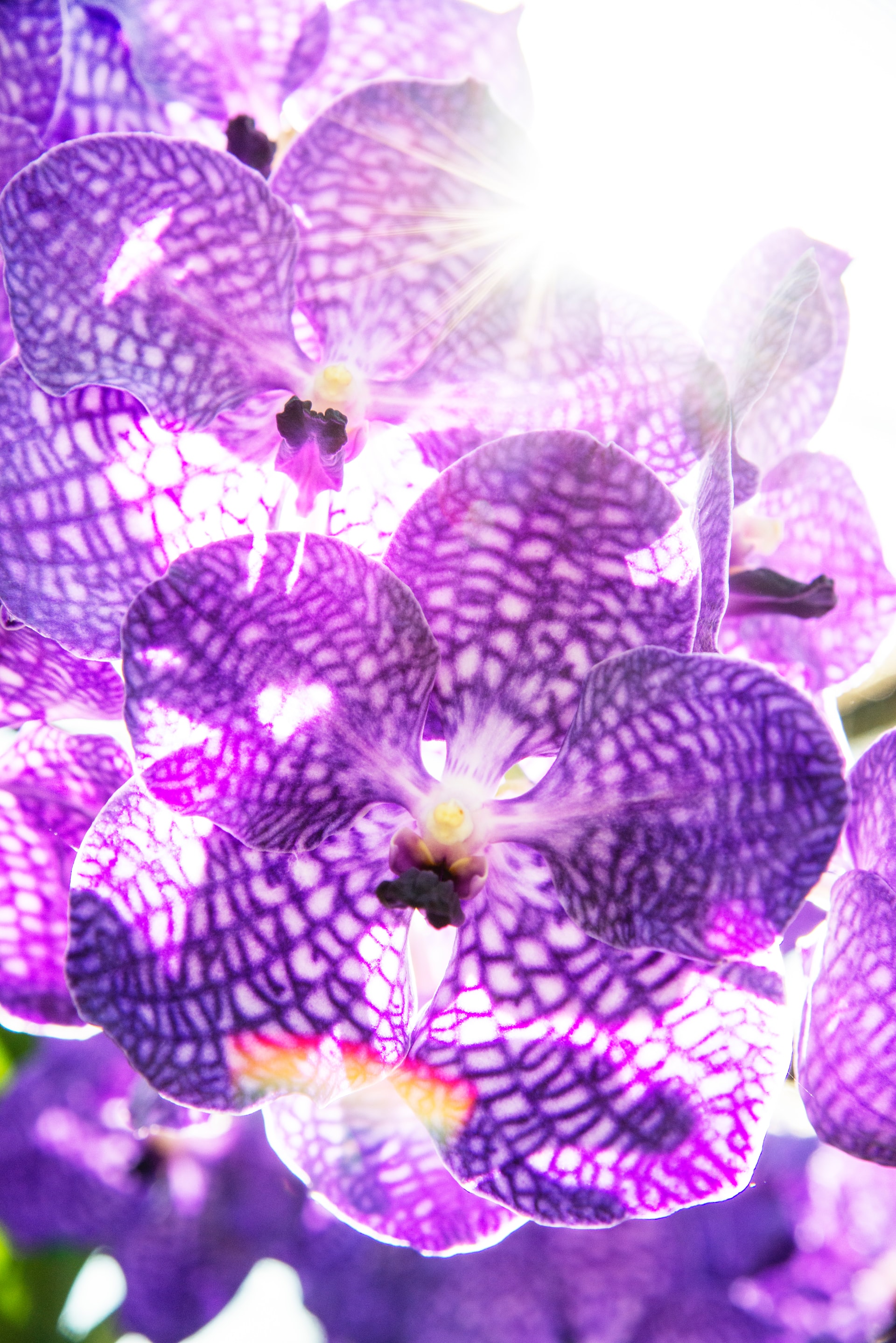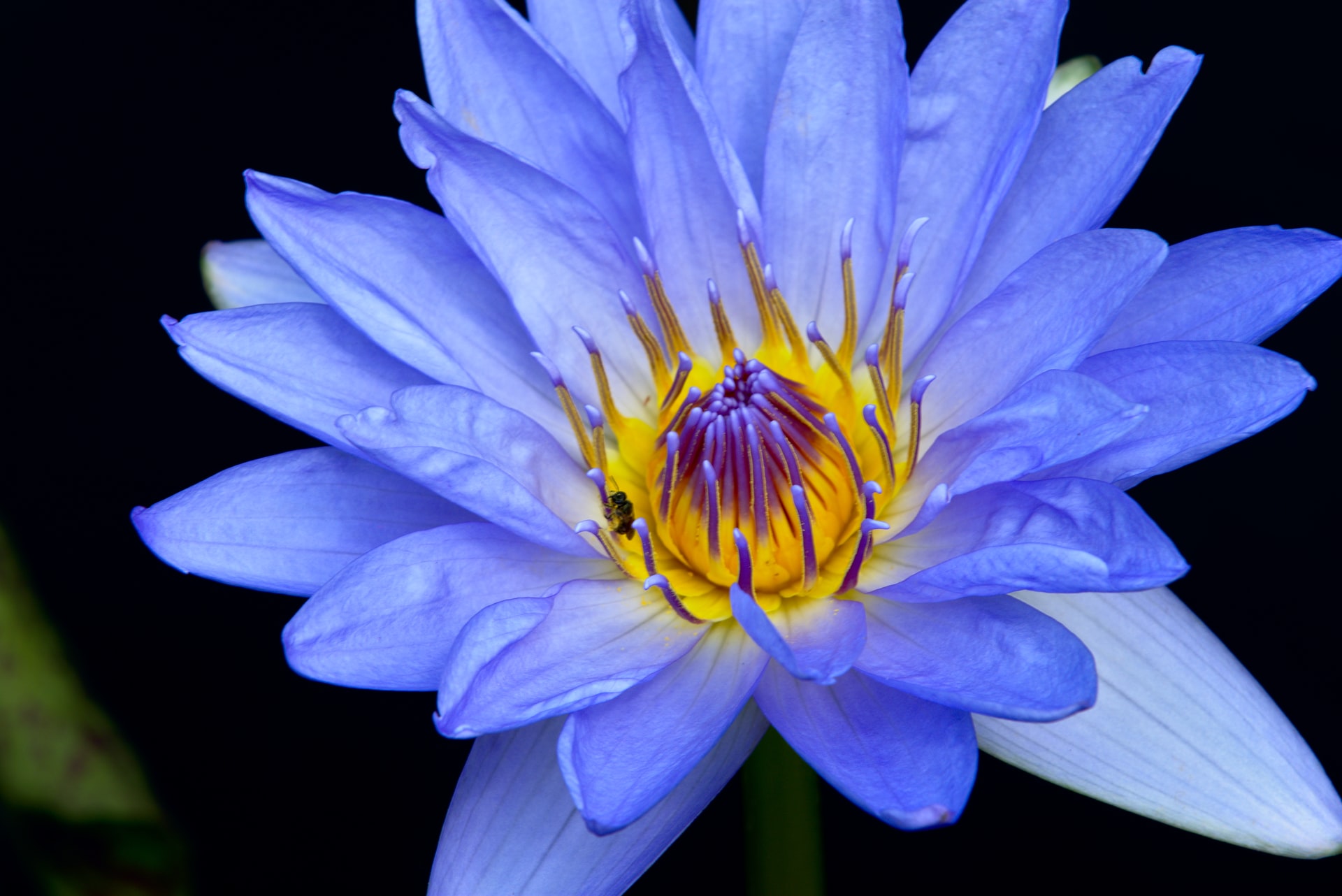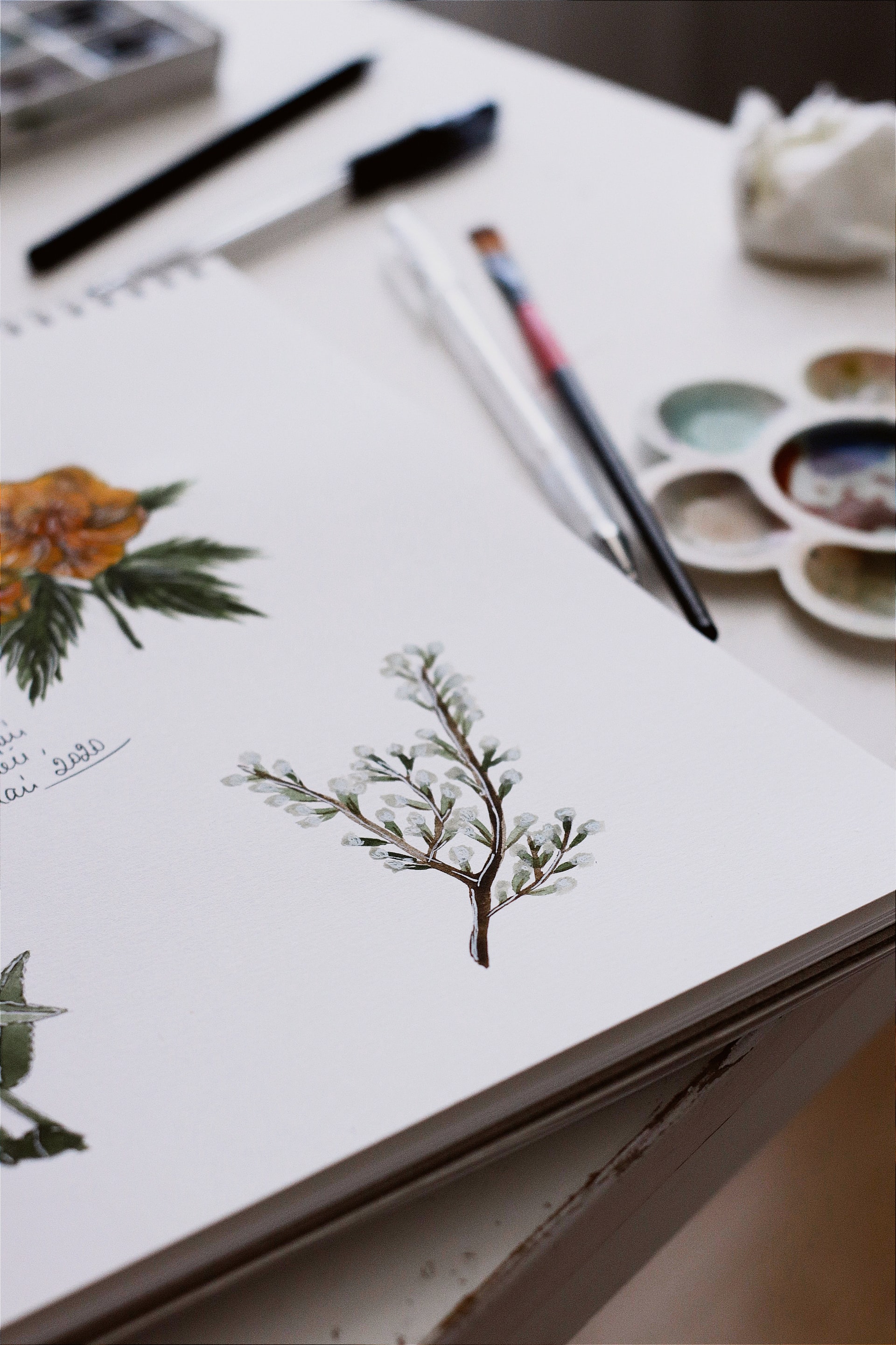Artists have been trying to capture the beauty of flowers for centuries. Whether it’s the delicateness of a petal, the vibrancy of an exotic bloom, or a vast field of wildflowers, flowers have inspired painters throughout the years. Painting flowers is a great way to try special techniques and new colors, and add them to your existing repertoire, whether your genre is realism, impressionism, surrealism or abstract. For beginners, flowers are a good subject to start their drawing and painting practice because they are accessible and stationary subjects. An artist can spend hours drawing a single rose, coming back to it time and again, without worrying that it has moved.

Blooming rose, Unsplash
To draw and paint flowers requires patience and practice, but with time anyone who’s committed to becoming proficient at floral art can achieve their goals. We’ve written this article to give you some information that may help you with your floral art pursuits. From learning the basic anatomy of a flower and about the different species to specific drawing techniques, we think you’ll find something of value that will improve the way you approach your subjects.

Orchid, Unsplash
Flower Drawing History
Since early Egyptian times, flowers have been a prime subject for painting and decorative arts. Probably the most prominent flower used during this time was the lotus, as the Egyptians considered it a symbol of the sun. They used flower painting on all sorts of things, including sheets of papyrus, ceramics and jewelry. During the Middle Ages, floral art was a popular motif in the large tapestries used to adorn the walls of castles and churches. Large-scale paintings of the Renaissance employed the use of flower drawing to enhance religious and mythological subjects. Flowers also became a popular subject for opulent still-life paintings of the time.

Blue lotus, Unsplash
One of the most important contributions botanical art has made is to species classification. Before the mid-1700s, plants were classified by how they were used. It was believed at that time that there were only about 6,000 plant species. But this all changed when, in 1735, Systema Naturae was published. It was the work of Carl Linnaeus, a Swedish scientist, and naturalist, who believed there were far more plant species and decided to create a new system of classification. This system included organizing them by the similarities of their reproductive parts. In his system, species were grouped first by the number of male parts, stamens they had, and second, by the number of pistils, or female parts they contained. This revolutionary system was accompanied by highly detailed drawings of each species of the plant along with their unique flower drawn by the leading botanical illustrator of the time, Georg Dionysius Ehret.
Art history is filled with flower symbolism. Throughout the ages, people have considered certain flowers or their colors to symbolize everything from friendship to romantic love to protection, sorrow and remembrance. The white rose, for example, is thought to mean purity or innocence, while the red one says, “I love you.” Tulips have long been considered a symbol for luck, while the humble pink carnation signifies a mother’s love. The next time you go to a museum, see if you can spot the flower in a painting and then research the meaning the artist was trying to portray.
Botanical vs Flower Drawing
Although the words botanical drawing and flower drawing are often used simultaneously, there is a definite difference in these types of renderings. One is a singularly artistic pursuit, while the other’s primary goal is scientific with an artistic appeal. Flower drawing can encompass anything from simple sketches of flowers in a garden to elaborate fine art paintings and everything in between. Flower drawings include hyper-realistic blooms, hazy impressionistic bouquets, and adorable illustrations for cards and children’s books. The artist isn’t held to the parameters of botanical correctness nor the thought that their work will be used for scientific study. Most flower paintings are created purely for the pleasure of the artist.

Botanical sketch, Unsplash
On the other hand, botanical drawings are beautifully executed depictions of scientifically accurate flora and fauna. Although botanical art must incorporate botanically correct elements, they also possess an artistic and aesthetically pleasing nature that makes them suitable for not only study, but also for use as wall art. Flower painting, on the other hand, is not as concerned with the specific parts of the flower but may take liberties with these to create an overall pleasing composition.
Traditionally, the botanical illustrators use actual plants for reference and draw them to scale in the appropriate color. Many times, the illustrator will also capture the plant’s habitat by placing other plants alongside it. Unlike botanical painting, flower painting may use real flowers as well as floral images from personal photos or those from the internet for reference. Many flower painters create flowers from their imagination.
When early explorers were discovering new worlds, botanical art was important for recording their discoveries. It also became an important element in the naming of families and species as more and more flowering plants were uncovered. Before the invention of the camera, these drawings were the only way to examine flowers from far away locales, and botanists could pore over them for years without fear of decay as they would with an actual flower. Today, botanical art is important for future generations to see flowers that are no longer available as more and more species become extinct.
Flower Anatomy
Just as it’s important to know human anatomy to draw an accurate human figure, you should know the parts of a flower before embarking on a floral drawing. Although all flowers contain the same basic parts, different species have their own set of uniquely shaped elements that can influence the shape and structure of the flower you wish to draw. Even though you can’t see much of the flower’s anatomy, it’s worth a closer look inside to understand how they come together to make your flower look so special.
Petals
The flower petals will be at the forefront of your drawing. But, why do flowers have petals? Besides being a colorful way to attract pollinators, petals also act as a barrier to protect the delicate reproductive parts of the flower. For artists, this is the most important part of the flower to render correctly. Petals immediately identify the plant, so it’s important they are drawn and painted using the right shape and colors.
Stamen
The stamen is the male part of the plant and contains the filament and the anther, which produces pollen. In some flowers, such as the lily, the stamen is an identifying component that if not included in the drawing would make it look a little odd or not quite right. Stamens also come in a variety of colors and are the part that attracts bees and other insects that go a long way in creating a realistic-looking flower.
Pistil
This is the female part of the plant and contains the ovary and ovule of the plant from which potential seeds are produced. This is the bulbous bottom of the flower. On the outside of the pistil is where the petals begin and grow outward. It is important for artists to make sure they get the shape of this section of the plant correct, as it gives shape to the flower.
Stem
The stem or stalk of the flower is what supports the flower. An artist should keep a special eye on the stem of the flower since the way it is shaped will help determine the placement of the flower’s head. Some stems are very thin and sway gently with the slightest breeze, while others are thick, creating a straighter more solid foundation for the flower. Some stems contain multiple thorns, as on the rose plant, or are squarer in nature as with the stem of lavender.
Here are some great Arteza products that will help you create your floral art:
Professional Drawing Pencils - Pack of 12
This pack of 12 expert drawing pencils will help you to elevate your drawings, sketches, and illustrations. The professional drawing pencils included in this set come in varying degrees of hardness, to provide you with every pencil you need to create a masterpiece.
Detail Paint Brushes - Set of 15
Arteza’s miniature paint brush set is ideal for any artist working medium to smaller scale. Our set of 15 detail brushes are designed to make painting as straightforward and hassle-free as possible. Each brush in this set is handmade with professional-grade white taklon hairs and nickel-plated copper ferrules. Do you find that the paintings you create require a lot of small details? This set is perfect for you.
EverBlend Ultra Art Markers, Brush Nib, Flora Colors- Set of 36
Introducing our latest development in the world of professional illustration, the EverBlend Ultra. Produce vibrant works of art that will last using our newly improved alcohol-based ink markers. This set of 36 EverBlend Ultra Art Markers in flora colors make layering and blending hassle-free, enabling you to produce artwork with impressive color transitions. These expert illustrator markers are suitable for artists of all ages, backgrounds and skill sets.
Acrylic Premium Artist Paint, 22ml Tubes - Set of 24
This set of 24 acrylic paints offers a variety of colors to choose from, ranging from warm tones to cool. Create portraits on canvas, landscape artwork on wood, or even use them for your fluid art projects. These high viscosity paints are thick and filled with pigment, allowing you to create a variety of looks and designs, whether you’re building texture with a palette knife or using a detail brush to add the finishing touches to a piece.
Flower Drawing Techniques
There are almost as many ways to draw a flower as there are flowers. From making a loose flower sketch to using more advanced drawing techniques, the creative possibilities are endless. Whether an artist is going for a hyper-realistic drawing or an abstract that focuses on the essence of the flower, there are some techniques that translate across styles. Once the basics of drawing are learned, an artist can use them within their own artistic style to create artwork that’s original to them.
Techniques To Try
- General To Specific - This is more of a general rule that, if followed, will make drawing flowers easier. It involves carefully observing the outline and interior shapes of the flower and drawing them in simple geometric forms (i.e., a circle, oval, rectangle, etc.). Once these general shapes are drawn, the artist begins refining the drawing until a specific shape is obtained. This is also a good rule to follow when painting the flower. Start with the largest most general areas to add color to first, working your way to the more subtle and specific shades in the smallest areas.
- Hatching - This drawing technique can be used on any drawing to give it dimension and create volume. It involves placing straight parallel lines to imitate the shaded areas of the flowers. These would be the areas where little to no light would be shining. The farther apart the lines are, the lighter the shading will appear. The closer the lines are, the darker an area will look.
- Cross Hatching - This is when the artist overlaps the hatching lines with those in the opposite direction, which creates even darker values. Once again, the artist can manipulate the values of the area by placing the lines closer together or farther apart.
- Shading Techniques - Besides hatching, there are other ways to add shading to make flowers look more three-dimensional. Pressing on the pencil as you color an area can create light and dark values. This is important when showing the shadows under petals or to define their curves. The more pressure you apply, the darker your shade will be.
- Blending Stumps - To add smooth transitions, many artists use blending stumps (tightly rolled paper cylinders with a pointed end) to rub the roughness away. This also helps soften the edges of the drawing.
- Kneaded Erasers - Once an area has been shaded, many artists use a kneaded eraser to lift the graphite from the paper to create highlights. These highlights would be where the light is shining on the flower and can add to the realism of the subject.
After reading this post are you ready to create some floral art? Are you inspired to paint some flowers? Shop our site for your next creation.
















